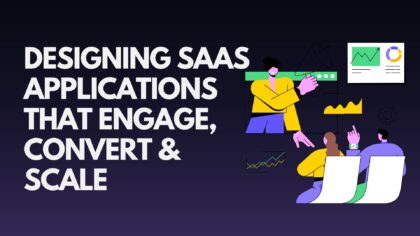Over 375,000 online stores are using Shopify to get their products on the market.
The software is sophisticated enough to please experienced retailers and established businesses – but simple enough that regular folks can use it to quickly launch a business to earn some extra income.

That’s the beauty of Shopify.
But what a lot of people have found is that we’re now at a stage where creating the store is the easy part. There’s so much competition due to the reduced barrier to entry that, often it can be hard to cut through the noise and start generating sales.
If you’re one of the many people who has faced this challenge then just know that you aren’t alone, we get hundreds of emails from frustrated store owners pulling their hair out wondering why no-one wants to buy their products.
Before we go on I want to preface this guide by saying that there is no substitute for hard work and dedication. You can’t just build the store and expect users to come flocking (unless you have a very unique product).
But we’ve written this guide to guide you in the right direct with real, practical ways to grow your Shopify store without blowing a hole in your budget or potentially risking your business. Let’s start with some tips that can literally double your traffic:
1. Make Your Store Mobile
It was only a few years ago that desktop computers were responsible for the majority of online traffic. This has changed, however. In North America, mobile devices, like tablets and smartphones, are responsible for 60% of all internet use, and Europe is not far behind.

So since over half of all internet usage comes from mobile devices (and 10% of people’s time on mobile devices is spent inside E-commerce apps), not having a mobile app essentially means you’re instantly losing half of your opportunities to engage and convert website visitors before you even go live.

The obvious objection to this is that for now, the world is still figuring out how to drive more mobile app sales. In 2015, they were “only” responsible for 15% of all E-commerce revenue.
But here’s why that doesn’t matter:
- Mobile E-commerce is a lot less competitive, which means getting that 15% of mobile revenue is significantly easier than selling from desktop traffic.
- We’re already spending more time on our smartphones than we are watching television. This trend is expected to continue – and as mobile retail matures, it’ll start to dominate E-commerce and do wonders for your business.

So unless you want to miss out on most of your target audience’s online time – or make sure your business stalls in the mobile-powered future – you need to consider whether the Shopify theme you’re using is responsive for mobile or not.

This will open the door for an abundance of mobile visitors to engage with your store and also provide a few extra benefits:
- Visitors are less like to bounce away on mobile devices
- You’ll start driving sales on mobile
- Improved overall experience for customers, they’ll be able to add products to the cart on mobile then buy on desktop if they wish
- Your store is more likely to rank in Google Search for mobile specific queries
- Shopify also has a responsive checkout, so users will be able to convert on their device too
- If you’re running Paid ads, you can test how well mobile users convert (instead of excluding them completely)
This is a simple step, but in a world where mobile is becoming increasingly dominant, it’s one of the more powerful things you can do to set your Shopify store up for success.
Once you’ve optimised your store for mobile, you’ll be ready to sell to just about everyone, and the choices you make about exactly what you sell can have a profound impact on your success.
2. Selling More Products
This tip might sound a little too simplistic, but it’s absolutely true. If you want to make more money, sell more products. This is an obvious strategy, and it’s anything but new. In fact, retail giant Amazon used this exact concept to beat brick-and-mortar bookstores when it was just starting out.
Here’s how.
In the late 90s and early 2000s, most people still bought physical books from physical stores.

Unfortunately, these stores could only stock so many books, which meant that people would often have to go without the product they wanted – or wait for days, weeks or even months for it to be ordered in.
So what did Jeff Bezos, Amazon’s founder, do?
He made an internet website that had all the books, 24/7. Many of these books sold in low volumes, but that didn’t matter. They still sold, and they made Amazon a lot of money while pulling in customers who weren’t satisfied by other stores.

This would later come to be known as the long-tail strategy. The same principles helped the Washington Post overtake the New York Times in daily traffic for the first time when Jeff Bezos bought the publication.
Now, we’re definitely not saying you should do the exact same thing. You can’t realistically sell everything – and even if you could, you’d be competing with Amazon and its $462 billion in market cap.
We’re simply saying you should offer more stuff to make more sales and engage more people.
But how can you make sure you’re doing this the right way?
For starters, you need to carefully research your options and make sure you’re flexible with what you sell. You want to make sure whatever you have on offer is highly relevant to your brand, but you don’t want to limit yourself.
Take The 5TH as an example, they originally started out just selling watches – now they sell sunglasses and accessories.

These are complementary products which mean that someone is likely to buy both (thus increasing your average order value).
In the beginning, you’ll want to sell a product that either scratches your own itch, is unique, or something that’s selling well globally (and not saturated like fidget spinners 🤔). Then, as you start getting traction you can add more products.
YOMG is a popular frozen yoghurt store here in Australia. Originally they started out just selling frozen yoghurt but have since added burgers and fries to their stores. People drive from all over Melbourne to get their burgers, so not only is there a sense of scarcity (as they figure out the business model) but the burgers really compliment their overall product offering.
Adore Me started out as a Lingerie retailer, but have since expanded their offering to include activewear, swimwear, and even cosmetics to maximise their sales. This expansion has greatly broadened their offering while keeping their beauty-focused brand image untarnished.

Having more products allows you to group them into broader categories to drive more traffic from SEO too.
It makes sense to sit down and research how you can group products and which complimentary products you can launch to satisfy your audience.
Here are some ways to see the types of products other retailers are doing well with:
- Search on Amazon and sort by reviews, this can show you some obscure products that people love
Here’s a good example I found that would fit perfectly if you ran a men’s grooming store or a store that sells beard oils like Beardbrand.
A simple search on Amazon and I came across the BaKblade, a razor for shaving your back that has over 2100+ incredible reviews.

- Google product categories and see what comes up first in ads and the shopping tab. This is a surefire way to determine success.
- Make a dummy Facebook account, then visit stores similar to your own and see which ads you get shown in your Newsfeed. If a product is getting promoted this way, it’s likely doing pretty well for itself
- Check out the top sellers in your category on websites like Amazon, eBay or AliExpress

Now that we’ve got some basics in order, lets start jumping into the stuff that’s really going to help you increase your sales:
3. Customer Retention
On average, 65% of sales come from previous customers. This means that spending time retaining these customers (and growing their average spend) is much more cost effective than acquiring new customers.
Just think about how much more likely you are to buy from a brand you know and trust than someone entirely new.
So you know that successfully retaining customers is important for your business, but you may not realize just how dramatically powerful it can be.
A Bain & Co study found that improving customer retention by just 5% can increase profitability by 75%, and successful businesses were found to allocate far more of their resources to customer retention than unsuccessful ones.

To put it simply, retaining customers is essential to growing your Shopify store. If you’re losing existing customers, then you’ll need to be pulling in huge amounts of new customers to make up for it, and working a lot harder just to maintain your current revenue. This isn’t what you want.
To prevent this from happening you need to take active steps to ensure you’re retaining your customers.
Here are our top 10 most effective ways to improve your retention:
Regular Email Communication
Send out regular e-mails. This will keep users engaged, and make your store the first one they think of when they’re ready to make a purchase.
There’s plenty of reasons to send customers an email:
- Notifications for new product ranges in stock
- Sending them a birthday message
- Announcing sales or special offers
- Seasonal emails for Summer, Autumn, Spring & Winter
- Specific holidays (like Labour day or No Shave November)
Surprise and Delight Customers
You need to try and go above and beyond for every single customer. Sometimes a little thought can go a very long way.
One great way to do this is to send handwritten notes with each order:
Improve Your Packaging
No-one likes getting their products in bad packaging, just look at the amount of time Apple puts into making their unboxing experience feel magical.
You can do the same, but you can also use your packaging to an advantage:
- Send it to relevant YouTube channels and ask if they’d do an unboxing of your products
- Put handwritten cards in your boxes
- Put coupons or vouchers for discounts on your next order
- Put refer a friend vouchers so they can hand them out to friends
- Provide manuals that helps your user with their purchase
- Be unique, funny or quirky with your packaging to make your customers smile
Shopping Cart Abandonment Emails
We’re all busy people, sometimes we can get cold feet or get interrupted when making a purchase. Normally these sales might be lost (as the user can forget to come back) but you can send them a reminder to recover their cart with an abandonment email.

This only works when the user is logged in and you know their email address though. In a scenario where you don’t, you can use abandoned shopping cart popups like the one below.

Retargeting
Another sneaky way to retain customers is by using retargeting. This places a cookie in their browser with information about the products they were looking at – which then allows you to show them ads via Google Ads or Facebook to entice them back.
Birthday Emails
Everyone loves a surprise on their birthday and so will your customers. Delight them with a coupon code or a nice message to brighten up their day (and give them somewhere to spend all that birthday money! 🎁)

Run Giveaways
We’ve written at length about how running giveaways can both engage existing customers and also raise awareness of your store.
Remember, your users love your products – so give them a way to win what they love (and reap the social rewards and sales).
Repeat Buyer Discount
The absolute best way to grow lifetime order values across clients is to incentivize them to come back and shop with you again!
You can do this easily with additional discounts after a user buys from you. Give them 10% off their next order, or give them 10% and a friend 10% – there are lots of potential ways to drive these sorts of repeat sales.

Create a Loyalty Program
Just like being a frequent flyer customers love to be rewarded for their loyalty. So consider setting up a loyalty program that allows them to earn points from their purchases – this will increase the stickiness of your store and improve customer value and retention.

Curate Product Reviews
Reviews help sell products, they can also help users decide which products to buy (based on the experience of other users).
How often do you use reviews on Steam or Amazon to decide on which games or products to buy? I do it all the time.
With this in mind, you absolutely should consider a way to let users give feedback on your products.

The example we’re using here is Free and made by Shopify themselves:
Be Responsive on Social Media
Replying to comments on your posts is a great way to boost engagement and create a sense of community.
It also shows your customers that you’re listening 👂
Don’t Take Complaints Personally
Customers don’t like to be ignored and sometimes they will take to social media to vent their frustrations.
There’s nothing I like more than seeing how businesses handle these frustrations (and criticism), sometimes it’s much better to continue to give the customer a fantastic experience for the sake of a small portion of revenue.
You never know, they might tell 10 friends and continue shopping with you!
We’ve gone over some fantastic ways you can improve the profitability of your store, but any tweaks or additions you make to your store may be for nothing if you don’t properly communicate them with your market. One of the best ways you can do this is by beginning to…
4. Build an E-Mail List
The great thing about having a strong email list is that once you’ve got one, you can message people anytime you want. Your traffic won’t be reliant on Facebook, Google, or anyone else and you’ll be able to drive traffic with the push of a button.
This is why e-mail marketing is one of the most profitable marketing channels available, especially for e-commerce stores.
Check out these 70 stats on why email should be your number #1 focus.
Having a sizeable email list is undeniably beneficial for any business, but how exactly can you build an email list in the first place?
Well, Gleam once again makes this easy with Capture. You can use this powerful app you to make customized landing page pop-ups which will get people signing up from inside your store.
With Gleam Capture, you’ll be able to build targetted opt-in forms that will engage your audience and help you convert the traffic you generate into a sizeable mailing list.
Find Out How to Make Your Own Discount Popups
Take a look at how you can use Capture to build your own discount popups and use them to generate leads and drive sales.
CHECK IT OUT
Once you’ve set yourself up with a way of collecting email addresses, and some quality email marketing content, you’ll be in control of the customer-retailer relationship, and able to provide your audience with valuable updates and marketing material whenever you see fit.
As undeniably effective as email marketing is, it is reliant on people giving you their email address, which is reliant on people visiting your website. This means that you need to attract people to your website, and to do this you need to produce compelling content.
5. Optimize Your Content for E-commerce
Content Marketing is a type of marketing that involves the creation and sharing of online material. Content Marketing doesn’t explicitly promote a brand, but rather stimulates interest in a brands products or services.
It’s important that you know this because the ROI of content marketing has been found to be 8 times higher than that of traditional marketing.
Content is king, but as an e-commerce business, there are a few core types you should focus on. Specifically…
Video Content
64% of all users are more likely to buy a from you after watching a relevant online video and 90% of customers report that product videos help them make purchasing decisions. Add this to the fact that videos make up an increasingly significant portion of web traffic and it becomes quite clear that you need to be using videos as a part of your marketing mix.
Product Descriptions
If you can clue people into exactly what your product is and how it can help them in an engaging manner then you’re likely to see not only your conversion rate improve but also your page shares and SEO.
Remember: Google’s algorithm promotes high quality content, and a well thought out and compelling product description absolutely counts as high quality content.
Basically, the better your on-page copy, the more likely you are to make sales.
Be Responsive on Social Media
Images
Like product descriptions, images are a central component of your store’s marketing. The better the images you provide are, the better your product will look. And the better your product looks, the more sales you’re going to make.
High quality images that show your product in use are always a good idea, as are ones which clearly illustrate exactly what it is you’re selling.
Here’s a good example from our friends at Beardbrand:
















